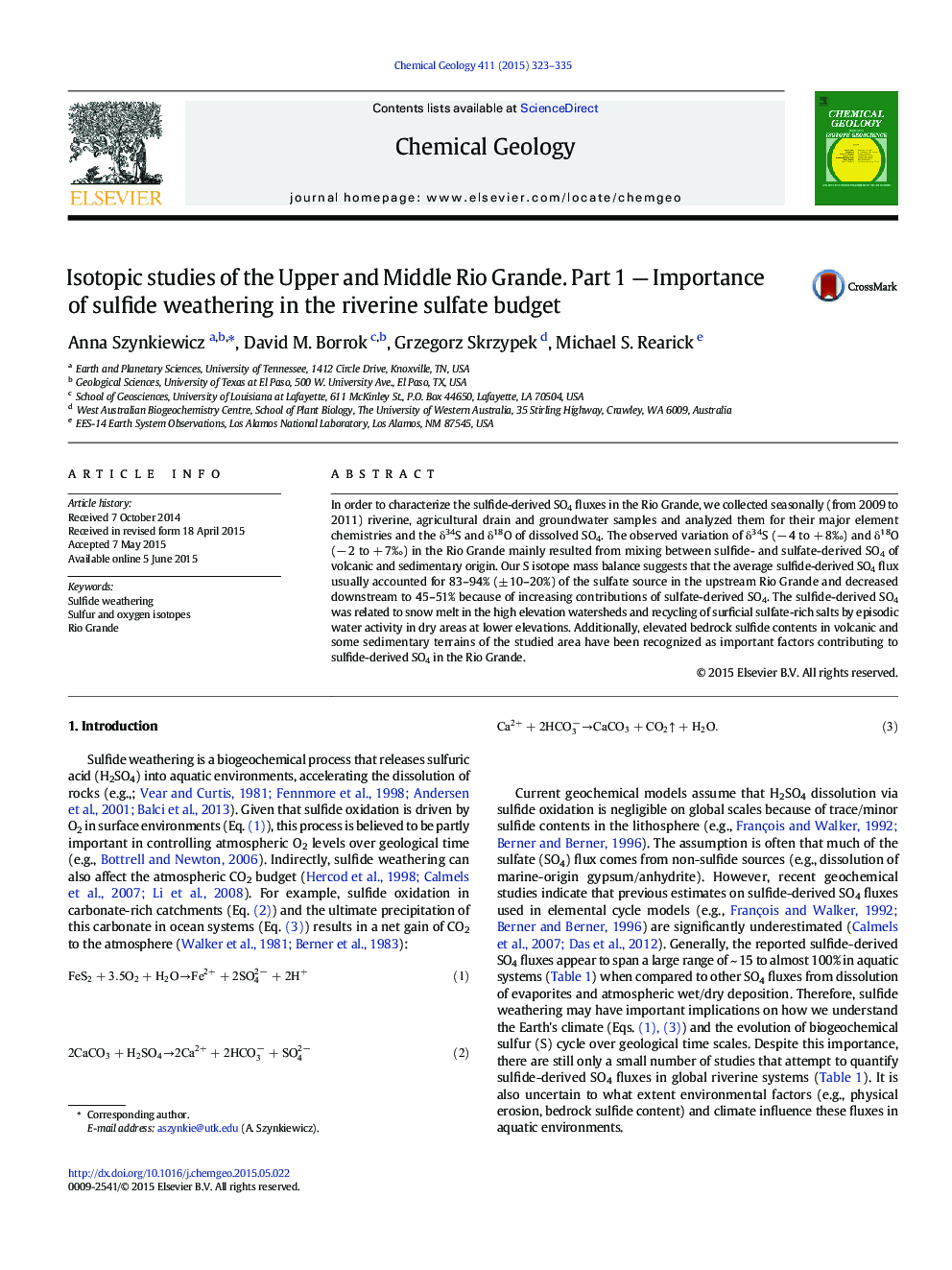| Article ID | Journal | Published Year | Pages | File Type |
|---|---|---|---|---|
| 6436361 | Chemical Geology | 2015 | 13 Pages |
â¢Sulfide-derived SO4 fluxes are significant into the Rio Grande.â¢Snowmelt is important in increasing fluxes of sulfide-derived SO4.â¢Sulfide-derived SO4 fluxes are not directly linked to climate.
In order to characterize the sulfide-derived SO4 fluxes in the Rio Grande, we collected seasonally (from 2009 to 2011) riverine, agricultural drain and groundwater samples and analyzed them for their major element chemistries and the δ34S and δ18O of dissolved SO4. The observed variation of δ34S (â 4 to + 8â°) and δ18O (â 2 to + 7â°) in the Rio Grande mainly resulted from mixing between sulfide- and sulfate-derived SO4 of volcanic and sedimentary origin. Our S isotope mass balance suggests that the average sulfide-derived SO4 flux usually accounted for 83-94% (± 10-20%) of the sulfate source in the upstream Rio Grande and decreased downstream to 45-51% because of increasing contributions of sulfate-derived SO4. The sulfide-derived SO4 was related to snow melt in the high elevation watersheds and recycling of surficial sulfate-rich salts by episodic water activity in dry areas at lower elevations. Additionally, elevated bedrock sulfide contents in volcanic and some sedimentary terrains of the studied area have been recognized as important factors contributing to sulfide-derived SO4 in the Rio Grande.
